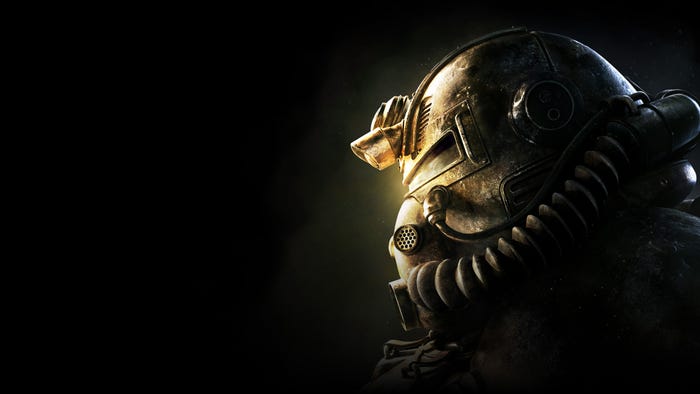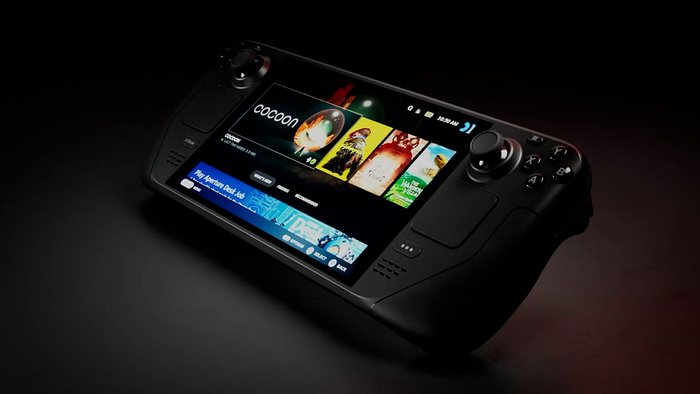In this excerpt from Rusel deMaria's new Xbox history tome, "Game of X - Vol 1: The Untold History of Xbox", original team members recount how the Xbox project started -- and how it got its name.

Writer Rusel deMaria's book on Xbox history, "Game of X - Vol 1: The Untold History of Xbox" is available today as part of the Retro Wonders Game Storybundle (curated by UBM's Simon Carless).
It's an interesting read, and deMaria has graciously agreed to let us publish the following excerpt of the book's second chapter, "It Could Never Happen Here."
“How does Xbox get started? There’s actually no one good answer to that question.”
–Robbie Bach
“I think it’s difficult to tell the story of something like Xbox because it involved so many different people, all of them have a small piece of it, all of them have their perspective. So it’s kind of a Rashomon-style thing to try to piece this sort of thing together.”
–Kevin Bachus
According to Otto Berkes, who in the late 1990s was in charge of DirectX and OpenGL development at Microsoft, it all started with some hallway conversations he had with DirectX evangelist Ted Hase.
Berkes and Hase were musing about the future and potential of DirectX as a platform. “The conversations naturally led to looking at the console market… looking at it through the lens of business, technology and the developer ecosystem. You know, at that time, Sony was in its ascendancy. PlayStation was the hot new thing.”
"The conversations naturally led to looking at the console market...at that time, Sony was in its ascendancy. PlayStation was the hot new thing."
To be clear, these original discussions, radical as they were when compared with what was normal at Microsoft, didn’t focus on a Microsoft console so much as a hybrid approach that combined some of the strengths of a PC system and some of the attributes of the console market and technology… something similar to what Microsoft had tried with Dreamcast (see Game of X v2 Chapter 16). What happened next involved a steady evolution in people’s thinking, based on a variety of factors and events.
Flashback to 1994, years before the conversation between Berkes and Hase, when Kevin Bachus was invited by Sony to a secret meeting.
“A bunch of people brought us into a room and showed us the original PlayStation. I thought it was really cool, and I think a lot of people thought it was really cool that a company like Sony was getting into the game business. And after they were so successful, you find yourself wondering who else might build a console. And invariably Microsoft would come up in conversations, but very quickly everybody would say, ’Yeah, they’d be great, but it’ll never happen.’”
Following a special Multimedia Retreat in 1997 (described in Game of X v.2, Ch. 24), Microsoft recruited both Seamus Blackley and Kevin Bachus. Blackley was hired as a program manager to work on a next-generation graphics project called Fahrenheit, which was a collaborative project between Microsoft and SGI, the original developers of OpenGL.
By the time Blackley joined, the project was losing steam at Microsoft, and, as Otto Berkes puts it, “for a variety of reasons I felt that it wasn’t going to succeed internally or externally. And Seamus had plenty of extra bandwidth. He’s a smart guy, with lot of ideas.”
Bachus became a group manager working under Ted Hase in the DRG, where he “spent a couple of frustrating years” working on promoting a logo program for DirectX and marketing programs for third-party games for Windows. Seeking more perspectives and help in developing their ideas, Berkes invited Blackley and Hase invited Bachus to join their ongoing—and unofficial—discussions. And now they were four.
They began to meet in Building 4, one of the original Microsoft buildings that encircled a duck pond affectionately known as “Lake Bill.” Berkes also says, “Building 4 was attached to one of the cafeterias that happened to serve one of the better lunches on campus at the time. So I was always happy to go over and have a meeting, have a lunch.” As their ideas began to take shape, they started doing research and documentation to back up and refine their growing concept. “It was literally just the four of us—no sponsorship, completely off the books.”
And four becomes five
Nat Brown’s title was Software Architect in the Windows division. In late 1998, his work consisted of going through crash logs and customer complaints and fixing application installation problems. To say that he was ready for something different would be an understatement. As he describes it, “Having to fix the registry and how applications install themselves… that’s a particularly bad level of hell.”
Seeking something more interesting to do, Brown had entered some executive training courses, which involved “hanging out with other executives,” as well as trips to visit senior managers at partner companies like Dell, participation in long-term planning exercises, and having “sit-downs” with Bill Gates.
Through these programs, he had gained a good deal of what turned out to be relevant insight into some of the company’s challenges and the attitudes of the partner companies.
In November 1998, Brown’s search for something more exciting was about to be fulfilled, starting when he ran into Ted Hase in a hallway. Hase talked about the state of games and graphics at Microsoft, calling them “a clusterfuck”. Then he added, “There are some guys I want you to meet.”
Brown remembers what occurred shortly after this ostensibly chance encounter: “They pinned me down in my office, all four of them in my very small office, and they wanted to talk about a plan they had.”
What they told Brown was that the real problem was Windows 95 CD-ROM, a meaningless logo program, and the only one currently aimed at game developers. The CD-ROM certification for Windows simply meant that a computer system had a CD-ROM drive built in. Nothing more.
“Game developers hate it,” they told him. “Graphic card developers hate it. And in the next couple of years, this hardware is going to go bananas. Soon we’re going to cross a threshold where we’re going to be at 30-60 frames per second of real 3D graphics of the kind that most people haven’t seen outside of academia.’”
"In the next couple of years, this hardware is going to go bananas. Soon we're going to cross a threshold where we're going to be at 30-60 frames per second of real 3D graphics of the kind that most people haven't seen outside of academia."
They got Brown’s attention with this information because his passion in college had been in computer graphics, whereas, since joining Microsoft, “the most exciting graphics we did was like putting bevels on 2D rulers to make them look a little more 3D and doing some vector-based sprites, which are truly horrific, for animating characters like Microsoft Bob.”
Still, they hadn’t gotten to the point, and Brown asked them why they were so excited, which is when Hase pulled from his back pocket a well dog-eared copy of Made in Japan, the autobiography of Sony founder Akio Morita. He said, “Read this.”
Reading Made in Japan helped Brown understand some of what Sony had done well, and even though some of their divisions were struggling at the time, the work ethic and design skills of the company were clear.
One thing that stood out for Brown was their management of the supply chain. What this meant is that, like all consoles, it would lose money in the first year, but PlayStation would become cheaper to produce each year it was being manufactured. Brown noted that this was “a scary characteristic to have in a competitor if you were going to build a console.”
Brown was inspired to learn more. He requested the past several years of technical/financial analysis of Sony from the legal and finance people and dug deeper into Sony’s finances, passing along what he was discovering to upper management. Gates already knew a lot about Sony, and had visited their offices often, as he did with other companies.
What Brown uncovered from his research that Gates did not know was that the PlayStation division consisted of about 1200 employees out of a total of 250,000 worldwide, yet that tiny percentage of the workforce was contributing 60% of their corporate profits!
By the beginning of 1999, Brown had become a regular attendee of this unofficial, unnamed group’s meetings, where he got a more complete sense of what was being proposed. Their thinking at that time centered on a logo program that set the bar higher each year, branding what a Windows gaming PC would be. It would specify what was required to display the logo, including: minimum standards for CPU, memory, hard drive capacity, input device control, and backward compatibility.
At the time, there was no serious discussion of Microsoft getting into actually building any hardware. Their plan was to convince OEMs (Original Equipment Manufacturers) to create gaming machines with Microsoft’s certification—a meaningful certification that game developers and makers of 3rd party peripherals like graphics and sound cards would appreciate and support.

As a company, Microsoft’s primary focus was still on their enterprise software—Windows in particular. Despite the fact that games were among the top activities of consumer Windows users, Microsoft’s philosophy up until that time was to stay out of hardware for the most part (other than mice and some peripherals) and just sell lucrative retail upgrades to Windows and their other software solutions. The logo program seemed the best approach to enhancing games for Windows at the time, but attitudes were about to evolve.
Give it a name
In early 1999, soon after Brown joined the group, the idea of their project’s name came up. Blackley had been calling it Midway, which carried with it the context of a significant victory over the Japanese in World War II. As a codename it had validity, but the time had come to seek something that was a bit more Microsoft-y and less military.
Brown remembers writing on the white board in his office. Because the original idea was to create a logo/compatibility program, something like “DirectX NN Compatible” or “Best with DirectX NN”, the whole idea was clearly derived from DirectX.
Various versions were proposed and written on the board, after Brown had erased a diagram of a rocket engine left over from a previous job interview he had conducted. (“I had interviewed some candidate who debated rocket propulsion with me and tried to argue that rockets were not simply propelled by the opposing force of the ejection of the mass of their propellant: no-hire that guy, not for being wrong, but for being a stubborn dick and also wrong.”)
Written on the board were several early ideas, such as DirectX-Box, DirectXXX-Box, XXX-Box.
The XXX versions were Hase’s joke, as he correctly pointed out that both Sony and Nintendo were very closed to adult content, which he observed was a factor in the demise of Sony’s Betamax vs. VHS back in the videotape era. In the original vision, where outside PC vendors would produce the products, Hase reasoned, their XXX-Box would have the advantage of more open content.
For months, alternate spellings of the name appeared in various reports and other writing, the most popular one being X-Box, but the one that the group itself adopted at the time was xBox with a cap on the “B.”
According to Brown, “The initial secrecy and, later, the period of not wanting to send anything specific in email to prevent the Dolphin/WebTV folks from getting their hands on it, meant we talked with a lot of folks internally and externally purely by phone and just said ‘xbox’. It got interpreted however they thought it was spelled.”
Correct spelling hardly mattered, though. It was always intended to be a code name, never the actual product name, and everybody knew what they were talking about, regardless of spelling.
About the Author(s)
You May Also Like








